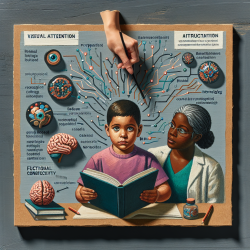Introduction
In the ever-evolving field of healthcare, the role of Certified Registered Nurse Anesthetists (CRNAs) and Anesthesiologist Assistants (AAs) is critical in ensuring safe and effective anesthesia care. The recent study, "Certified Registered Nurse Anesthetist and Anesthesiologist Assistant Education Programs in the United States," provides valuable insights into the educational frameworks that support these professionals. By examining these programs, practitioners can enhance their skills and contribute to improved patient outcomes.
Understanding the Educational Frameworks
The study highlights the comprehensive educational pathways for CRNAs and AAs in the United States. These programs are characterized by rigorous curricula that include simulation, didactics, and clinical rotations. The University of Pittsburgh's Nurse Anesthesia Program, for instance, is noted for its integration of advanced pharmacology, evidence-based practice, and simulation education, ensuring that graduates are well-prepared for the complexities of anesthesia care.
Key Components of Effective Education Programs
- Simulation-Based Learning: Simulation is a cornerstone of CRNA and AA education, allowing students to practice and refine their skills in a controlled environment.
- Interdisciplinary Collaboration: Programs emphasize collaboration with other healthcare professionals, fostering a team-based approach to patient care.
- Research and Evidence-Based Practice: Students are encouraged to engage in research activities, strengthening their understanding of the evidence base for anesthesia practice.
Applying Insights to Enhance Skills
For practitioners looking to improve their skills, incorporating elements from these educational frameworks can be transformative. Here are some strategies:
- Engage in Simulation Training: Seek opportunities for simulation-based learning to practice and enhance technical skills.
- Foster Interdisciplinary Collaboration: Work closely with colleagues from various disciplines to enhance team-based care approaches.
- Commit to Lifelong Learning: Stay updated with the latest research and advancements in anesthesia to continually improve practice.
Encouraging Further Research
The study serves as a call to action for practitioners to delve deeper into the educational methodologies that can enhance their practice. By exploring further research and engaging with professional development opportunities, practitioners can contribute to the advancement of anesthesia care.
Conclusion
Understanding and implementing the educational strategies outlined in the study can significantly enhance the skills of anesthesia practitioners. By fostering a commitment to lifelong learning and interdisciplinary collaboration, professionals can ensure the highest standards of patient care.
To read the original research paper, please follow this link: Certified registered nurse anesthetist and anesthesiologist assistant education programs in the United States.










